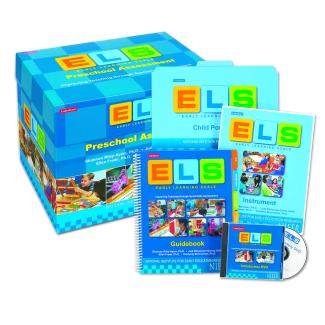
Filling an Assessment Need with the Early Learning Scale
NIEER’s New Preschool Assessment
March 14, 2012

As NIEER noted in a 2004 policy brief, “Child assessment is a vital and growing component of high-quality early childhood programs. Not only is it an important tool in understanding and supporting young children’s development, it is essential to document and evaluate program effectiveness. For assessment to be widely used though, it must employ methods that are feasible, sustainable and reasonable with regard to demands on budgets, educators and children. Equally important, it must meet the challenging demands of validity (accuracy and effectiveness) for young children. It is the balance between efficiency and validity that demands the constant attention of policymakers — and an approach grounded in a sound understanding of appropriate methodology.”
There are several purposes for using child assessments in early childhood. Generally, issues with assessment at this early age are often grounded in a mismatch between the chosen assessment and the purpose of the assessment. First, there are screening measures used to quickly highlight children in need of further assessment or intervention. There are standardized assessments to examine how children perform in relation to their peers, to evaluate the need for special services or to use in research evaluation protocols. Lastly, there are measures that document development and performance in students’ natural learning environment; these measures are best used to inform teaching. A recent report by the Educational Testing Service (ETS) describes the status of pre-K assessment policies and implementation in state-funded programs.
Teachers are already burdened with many responsibilities, and field research and professional development conducted by researchers at NIEER revealed that teachers feel overwhelmed by assessment requirements. Because of this, teachers are unable to effectively use assessment data in concert with instruction. Teachers expressed that they viewed assessment as an exercise of immense paperwork rather than a valuable resource used to improve student learning. In response, NIEER developed an observation-based performance assessment that is comprehensive and standards-based, but is also manageable and meaningful. The Early Learning Scale (ELS) was developed using respected research and with extensive input from teachers using it in the field. The ELS allows teachers to use high-quality data to effectively inform instruction and to make a direct impact on teaching and learning.

After a thorough review of child development research and literature, the authors of the ELS developed the scale, pilot-tested the instrument in preschool classrooms, and determined it is a reliable and valid measure, as described in the full technical report. This assessment system assists teachers in targeting the individual needs of children ages 3 to 5. Focusing on 10 measurable items across three critical domains—math/science, social-emotional/social studies, and language/literacy—the ELS provides teachers with a manageable and effective tool for assessing children’s progress toward early learning standards and expectations.
Using a curriculum-neutral approach, the ELS teaches educators how to become “participant observers” who use the rich data they collect to make accurate evaluations, plan instruction, and communicate effectively with parents and caregivers about children’s development. Before implementing the ELS, teachers are required to complete in-person training or self-paced online training, both of which are extensive and comprehensive. Furthermore, this training provides teachers with instruction on the importance of assessment, the components of an effective assessment cycle, how to use the ELS instrument, how to plan activities that will lead to efficient documentation, and how to meaningfully use data to plan for instruction.
For preschool programs interested in online capabilities, the ELS is available in paperless format via the Internet. The online version of the ELS was developed in conjunction with The Center: Resources for Teaching & Learning and is identical to the print version, except that the data is entered online and is available for evaluation electronically. Plus, the online version of the ELS offers handheld capabilities. Using a smartphone or tablet, teachers can record observations in real time and then upload them to the website, where observations are linked to items on the ELS.
To learn more about the ELS call 224-366-8581 to speak with a representative or visit www.myELSonline.com to download a brochure.
– Shannon Riley-Ayers, Assistant Research Professor, NIEER
– Judi Stevenson-Garcia, Research Coordinator, NIEER
About NIEER
The National Institute for Early Education Research (NIEER) at the Graduate School of Education, Rutgers University, New Brunswick, NJ, conducts and disseminates independent research and analysis to inform early childhood education policy.
